Takenaka Clan's Bodaiyama Castle & Jinya,
Japan’s Last Remaining Hatamoto Class Samurai Castle Structure.
Bodaiyama Castle is a mountain castle located on Mount Bodai in Tarui-cho, Fuwa-gun, Gifu Prefecture. It is one of the largest mountain castles in Gifu’s Nishimino district.
The mountain top castle overlooking the Nobi Plain measures 150m east-west and 300m north-south, is located on the summit of 402m Mt. Bodai at the eastern end of the Ibuki mountain ranges. It was used by three generations of the Takenaka clan, Shigemoto, Shigeharu (better known as Hanbei), and Shigekado.
Bodaiyama Castle was where famous Sengoku warlords, the Takenaka clan resided, and the amount of earthworks and planning that went into its construction and defense makes it a mountain castle definitely worth the visit.
The castle is believed to have begun as Iwate Castle, built by the local wealthy Iwate clan. In 1558, TakenakaShigemoto of Omido Castle invaded Iwate Castle and captured it. The Iwate clan perished, and so in 1559, Takenaka Shigemoto re-built it, renamed it as Bodaiyama Castle and moved his residence there. Takenaka Shigemoto died of illness at Bodaiyama the following year, 1560, and his son, the exceptionally talented tactician, Takenaka Hanbei Shigeharu took over as head of the family and became the lord of the castle.Hanbei served Hashiba (later Toyotomi) Hideyoshi, who was then a retainer of Oda Nobunaga as military advisor.
Attesting to Hanbei’s skills, he once captured the mighty Inabayama (Gifu) Castle with a force of just 16 men, greatly shaming Lord Saito Tatsuoki. In 1579, Hanbei died of illness in the field during Hideyoshi’s siege ofMiki Castle (Harima Province). His eldest son, Takenaka Shigekado inherited the family estates and became the lord of Bodaiyama Castle.
Despite his father having closely served Toyotomi Hideyoshi, at the time of the Battle of Sekigahara in 1600, Takenaka Shigekado joined the Eastern forces on the eve of the battle, and Bodaiyama Castle was used as a base for the Eastern Army.
Following Sekigahara, the Takenaka clan built a jinya at the foot of the mountain and in abandoning Bodaiyama, moved to the jinya.
Bodaiyama consists of six main compounds all separated by dry moats, trenches and kirigishi (sections of mountainside cut and shaved to form enhanced slopes), and numerous baileys of varying size. Many are obi kuruwa, being long narrow strips of land along the sides of the mountain, less for manned defensive purposes, but as a result of wanting the mountainside made steeper to prevent access. The shaving back of the mountainside creating the above mentioned kirigishi, enhanced slope, resulted in what are known as the narrow obi kuruwa, or a koshi-kuruwa.
Highlights include the small umadashi at the top directly south of the Hon-kuruwa (main bailey) and between Hon-kuruwa and the Ni-no-kuruwa compounds. Umadashi were like a barbican gate system, an effective defensive barrier and compound complex built in front of castle gates, usually outside of the main moats, and used as a screen to facilitate cavalry charges and attacks during times of siege. Umadashi allowed attack parties to exit the main castle, gather, then with the castle gates fully secured, sally forth and safely return, without letting the enemy in.
12 tatebori, vertical moats, surround the castle, some of the larger ones are an impressive 8-10m wide!
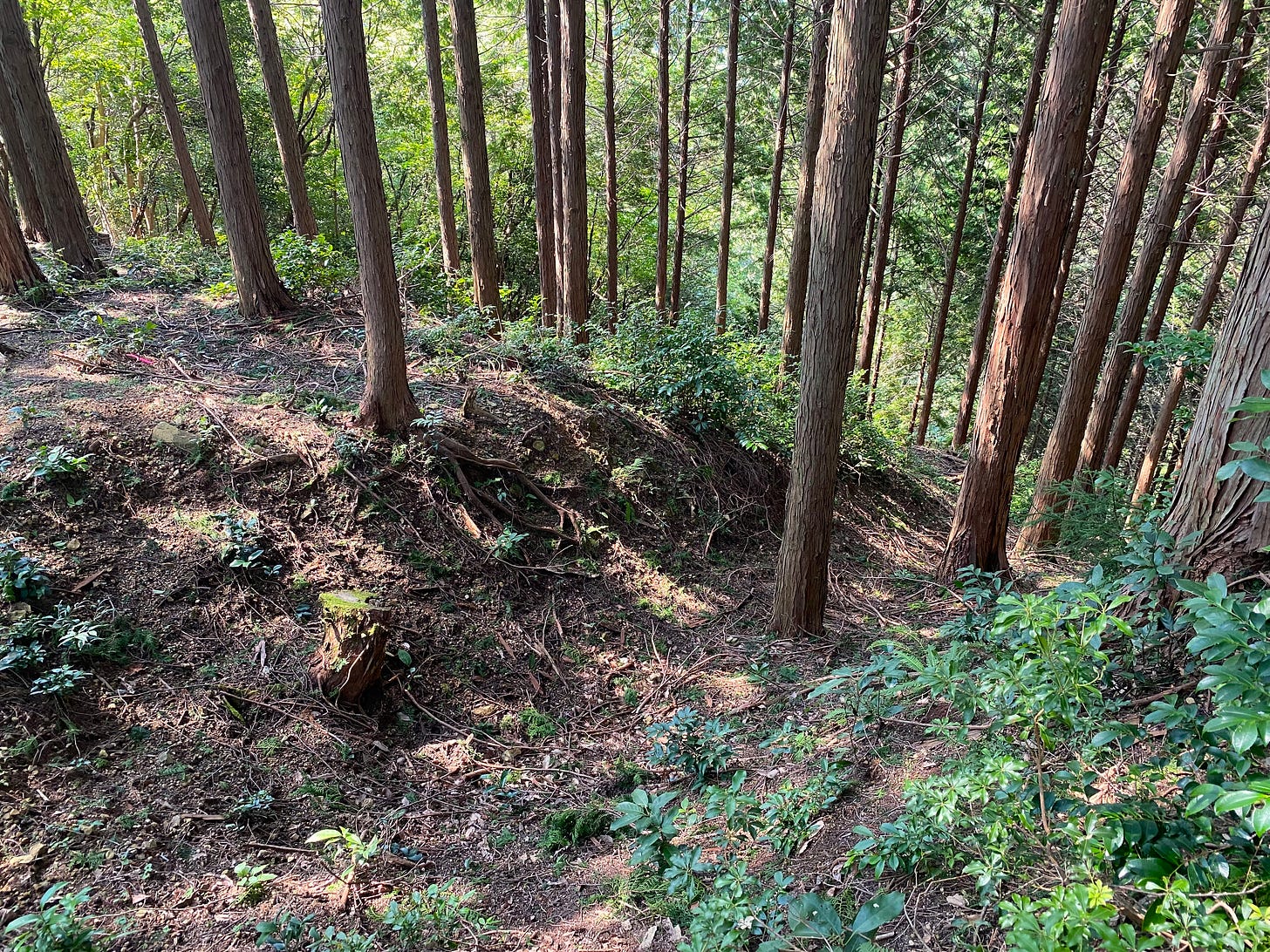
One feature of great interest was the huge horikiri trench, dug across the ridge line to prevent enemy access, protecting the southern sections and splitting the San-no-kuruwa and the dekuruwa compounds. My estimation is an 8m deep, 10m wide V-shaped trench, dug by hand over 450 years ago.
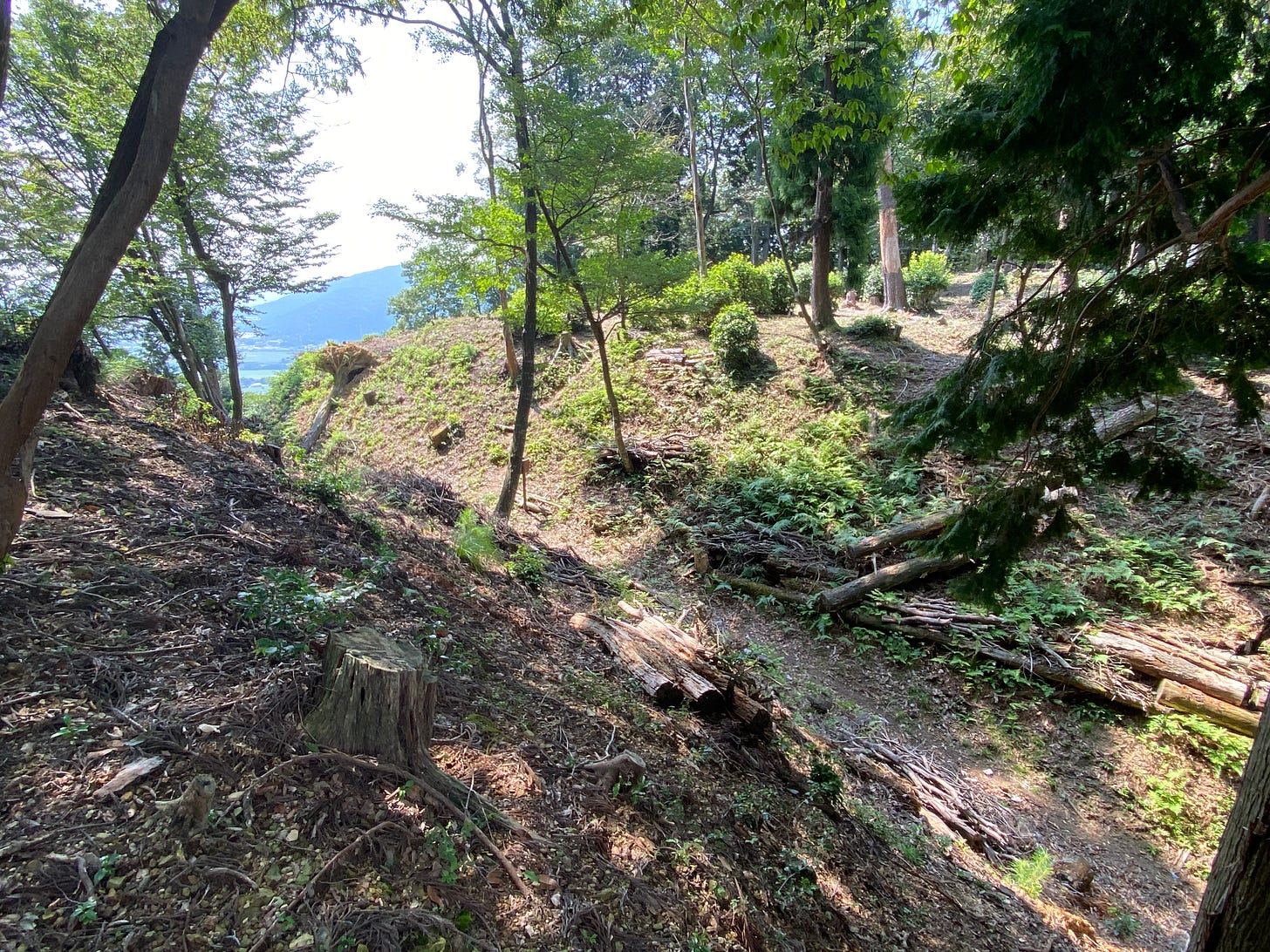
The southern end of the dekuruwa has earthen walls on the west and south sides that appear to have supported turrets or watchtowers and two large-scale tatebori vertical moats shooting off to the south, and a smaller vertical moat to the west.
The relative height of the castle site is about 330m, (the steep climb was a bit tricky in spots, not helped by 38 degree temperatures, 50% humidity and a lack of sleep on the day of visiting) taking about 45 minutes from the parking lot at the temple below.
Originally, the Takenaka clan lived at this well-developed, solid Bodaiyama Castle, but it was deemed inconvenient and so in 1588, 30 years after coming into possession of the castle, they built the new Iwate Castle at the foot of the mountain. This later became known as the Tarui, or the Takenaka Jinya.
Takenaka Tarui Jinya
The Takenaka clan jinya was a highly fortified castle residence located in Tarui’s Iwate district, Gifu Prefecture. Built at the base of the Takenaka clan’s former main mountaintop fortress, Bodaiyama Castle around 1588, the castle was originally called Iwate Castle, but during the Edo period, as the Takenaka clan were of Hatamoto rank with an income of around 6,000 koku, the castle was devalued to jinya status.
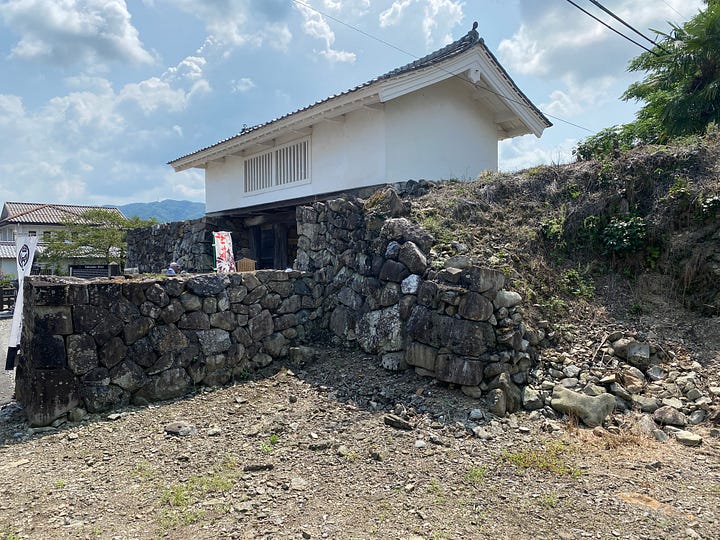
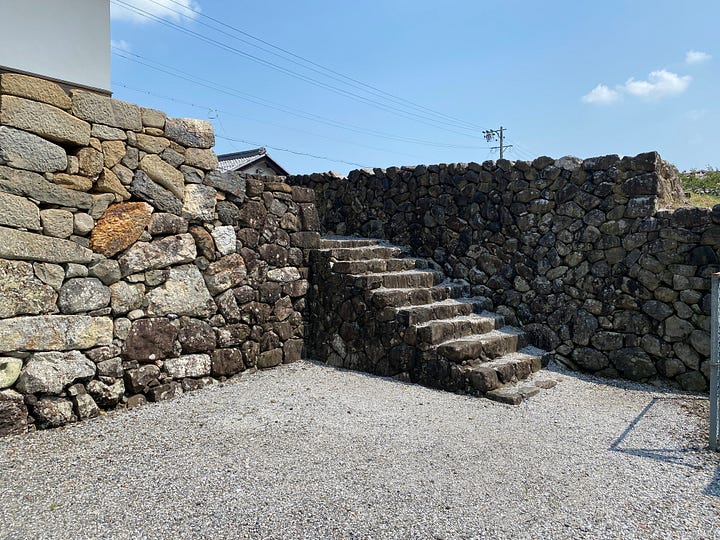
Although highly fortified, jinya were the equivalent of a small castle for lords of too low a rank or income to command a proper castle. It was also known as Tarui Jinya and Iwate Jinya.
Tarui played a major role in the Battle of Sekigahara in 1600. Ishida Mitsunari and his 6,700 troops passed through Sekigahara along the Nakasendo route and entered the small village of Tarui, located between Ogaki and Sekigahara, while en route to Ogaki Castle. Here they stayed a few nights at the base of Bodaiyama Castle, the Takenaka clans’ main castle before entering Ogaki.
At the time, the Takenaka clan's domain included Tarui and Sekigahara. Although initially showing pro Western interests, Takenaka Shigekado (son of the great Toyotomi tactician Takenaka Hanbei) would declare his position with the Tokugawa led Eastern forces the night before the great battle and fight alongside Kuroda Nagamasa. Both men were held in high esteem by Ieyasu for their efforts in the battle.
The jinya covered 74.23m on the east side, 68.18 m along the northern edge, 65.75 m along the west with a southern frontage of 76.96 m. Little remains except for a fortified yagura-mon gatehouse, ishigaki stone walls, a section of water moat and dorui earthen embankments.
The yagura-mon, a Prefectural Designated Cultural Property, has a frontage of 10.9 m, and a depth of 5.45m, and is considered to be the only existing Hatamoto class castle structure remaining in Japan. This yagura-mon is believed to have been relocated from Tama Castle, west of Sekigahara, by Takenaka Hanbei's uncle, Sugiyama Kakusuke.
Like most castle structures, the yaguramon was targeted for destruction by the new Meiji government but was preserved thanks to a local group’s efforts. It became the main gate of the Iwate School, the predecessor of the current Iwate Elementary School, in 1888, and the inside of the yagura-mon even served as a classroom until around 1945.
A moat once completely surrounded the jinya. A 20m section of water moat remains on the left side of the yagura-mon and a 64m section on the right was also a water moat, but has now been reclaimed. The southern side of the jinya is an elementary school and a kindergarten, and so few remains are left, but the earthworks and moat on the north side remain. The earthen mound continues from the tower gate to the north behind the houses along the road, behind Iwate Primary School and to the west. Although it was built by Takenaka Shigekado, the statue out front is of his more famous father, Takenaka Hanbei.
The Takenaka clan’s Tarui Jinya is considered an important example of early modern jinya layouts, and a remainder of Japan’s fascinating samurai history and culture.

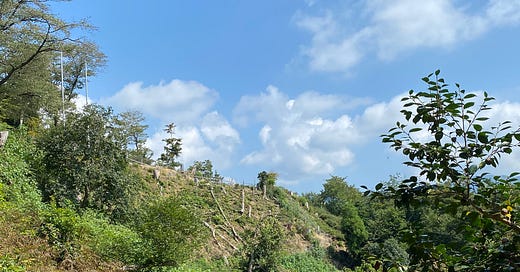




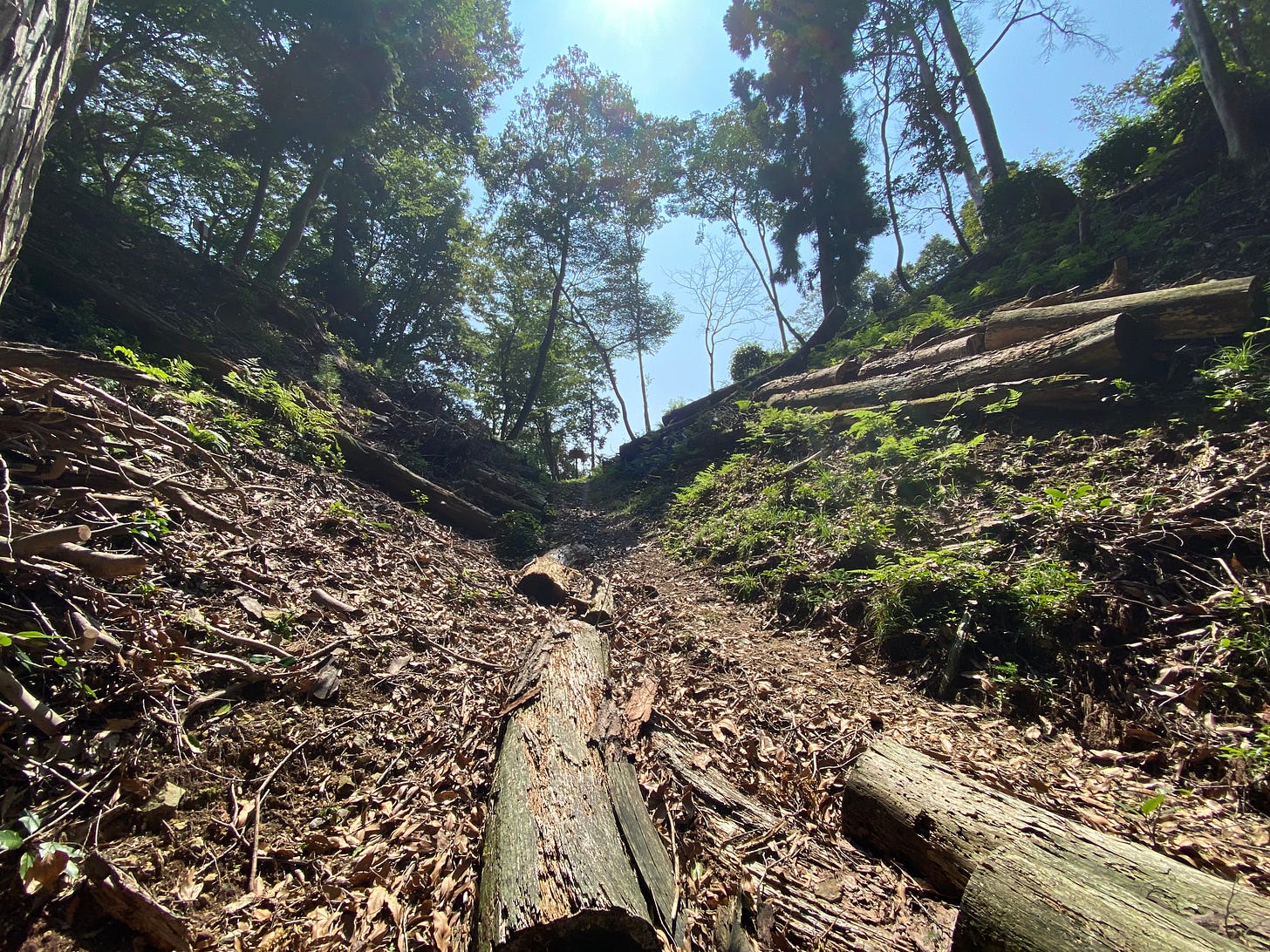
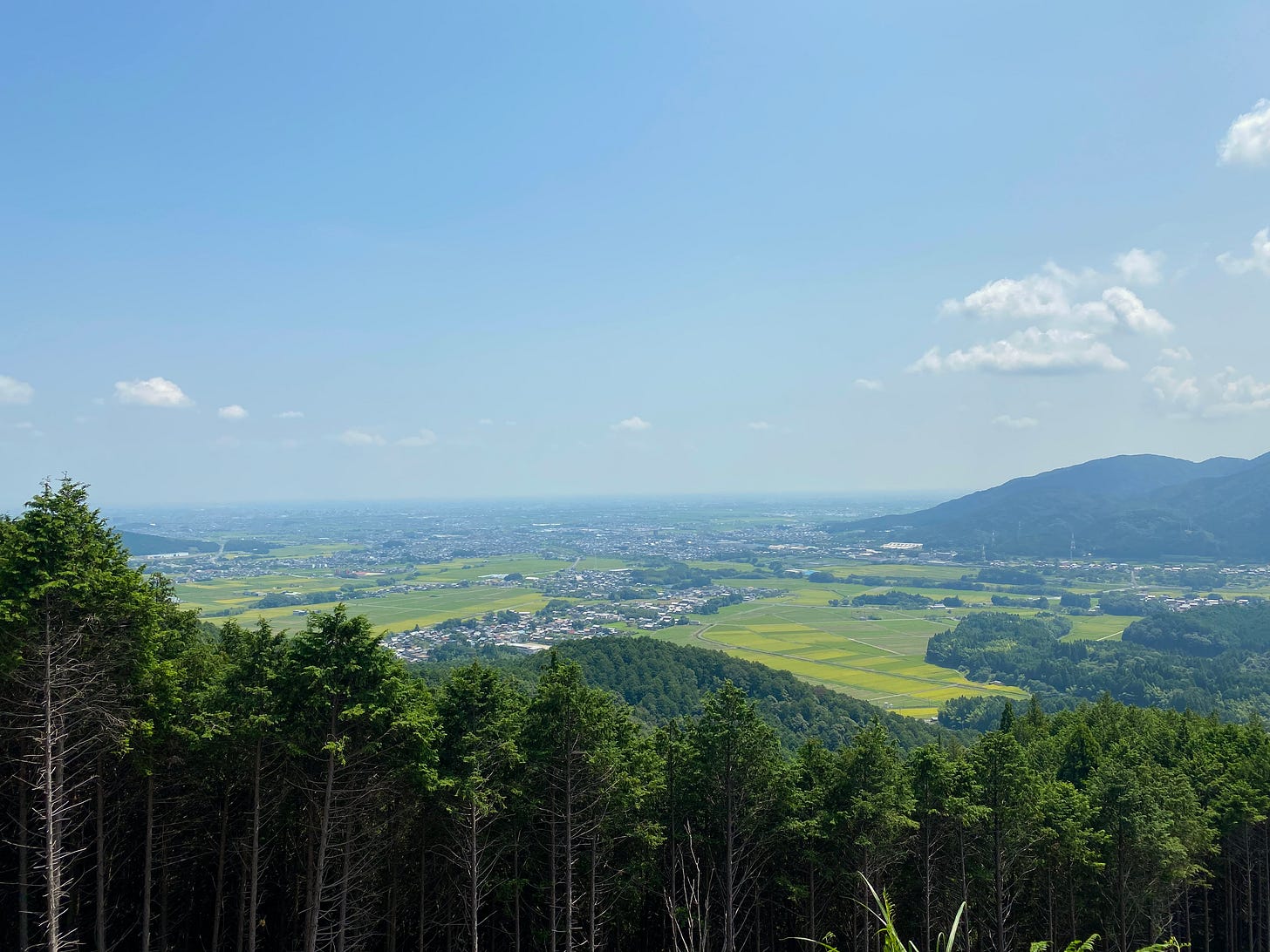

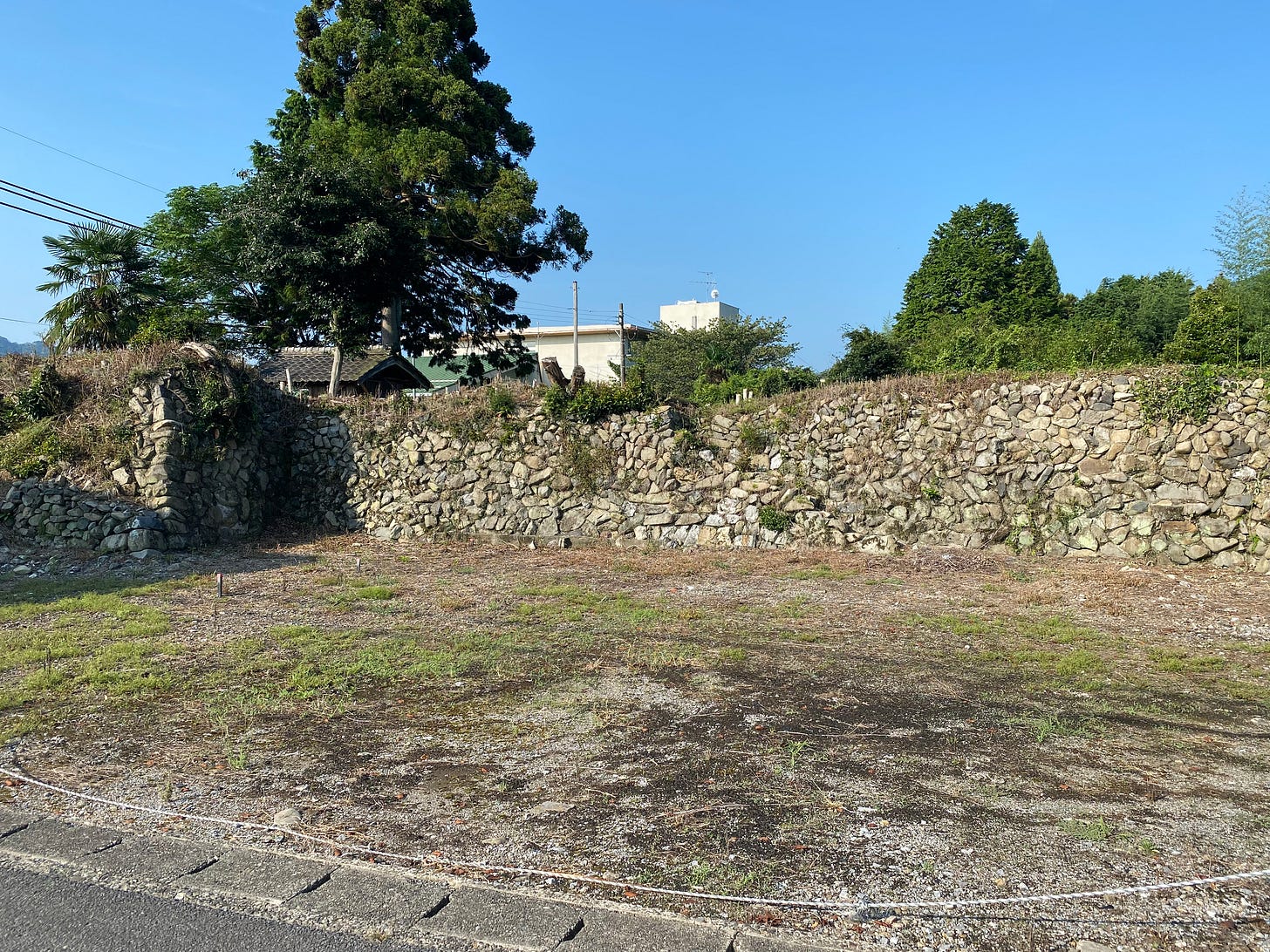
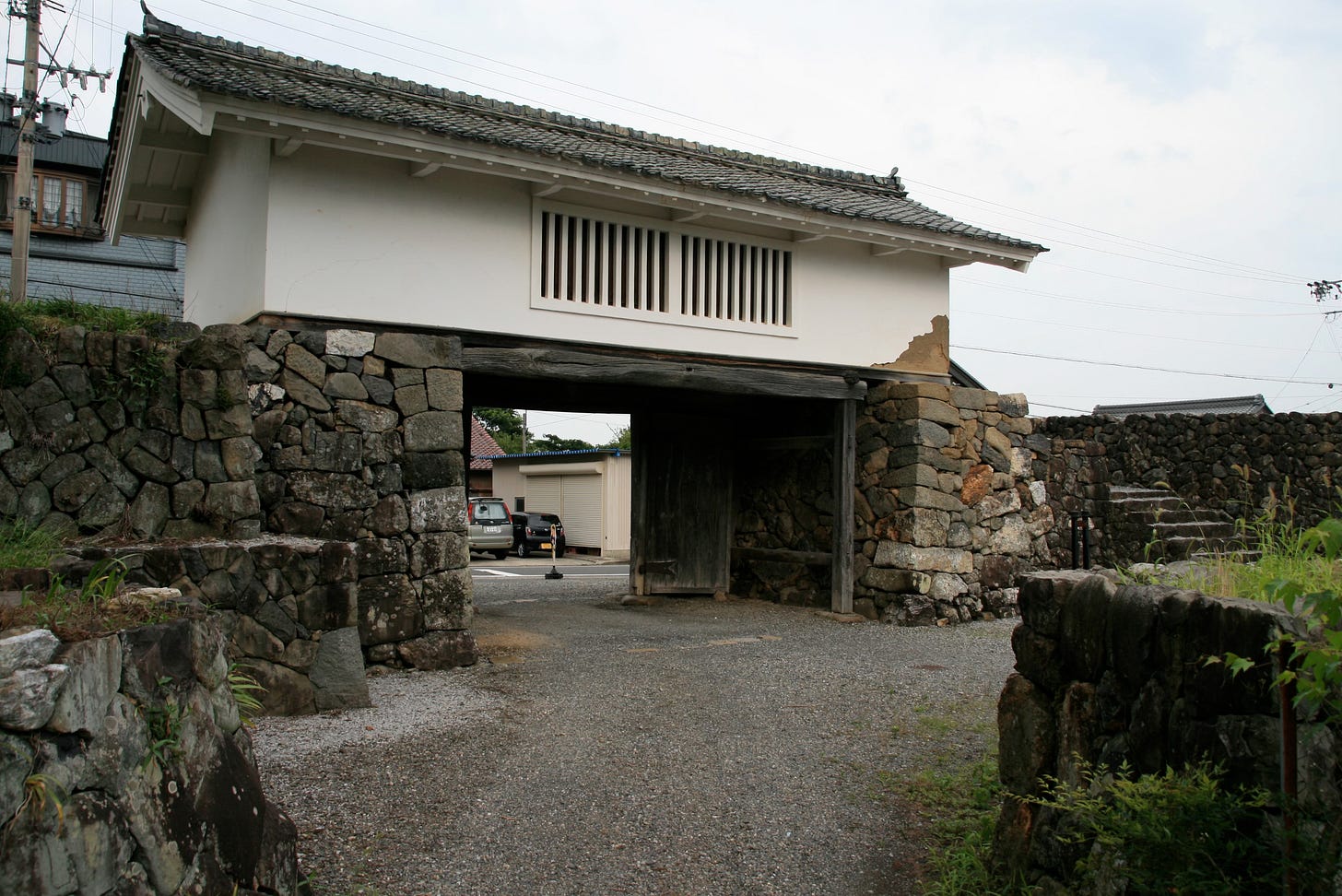
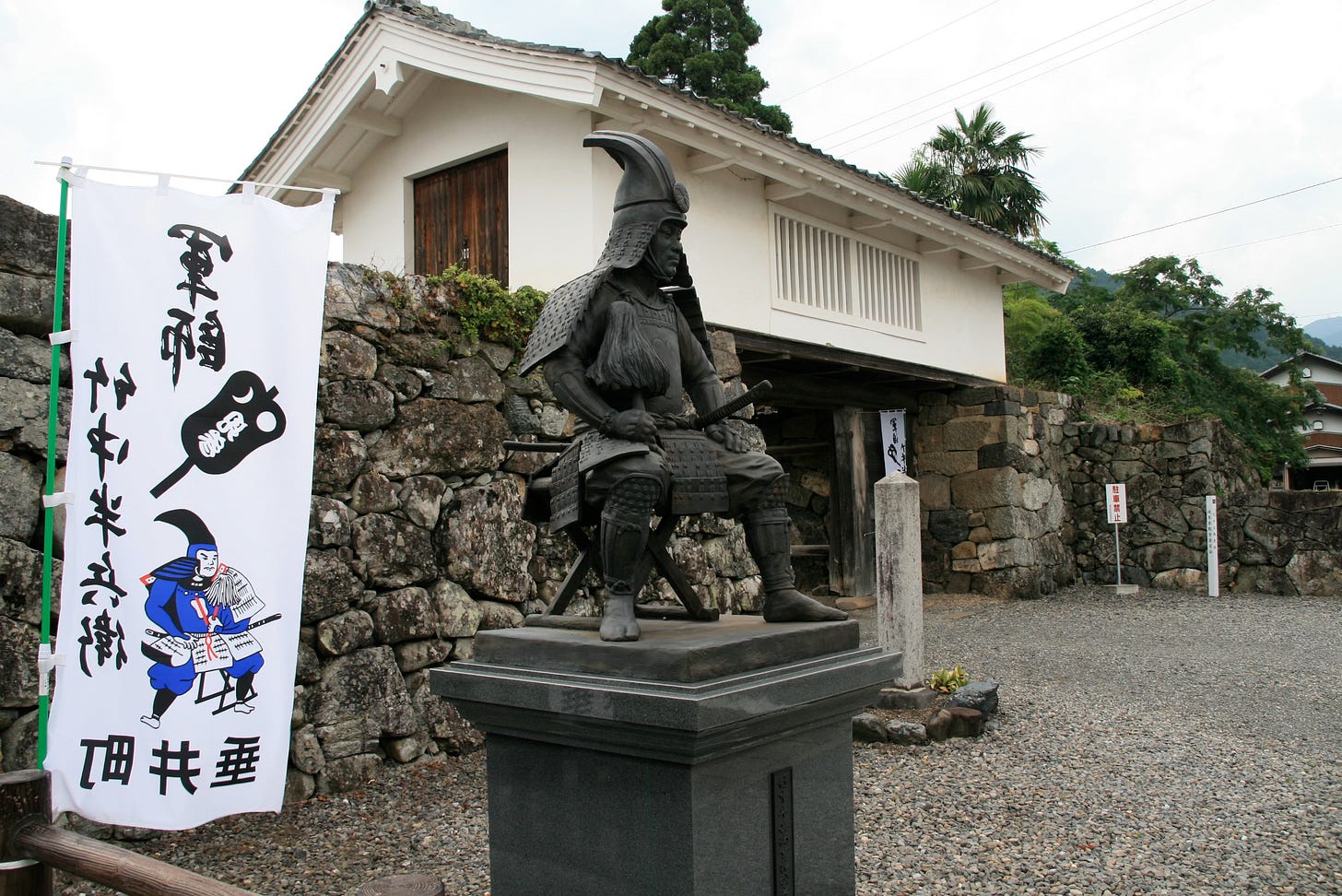
Hideyoshi tried to tell Hanbei to take it easy, but he was very serious in put an effort and to have a warriors death.
I know its hard to say, but could we call Hanbei and Hideyoshi “friends”? It was a different reality than what this word means today, but i think we have some cases.